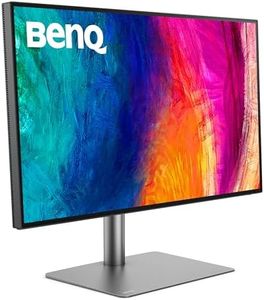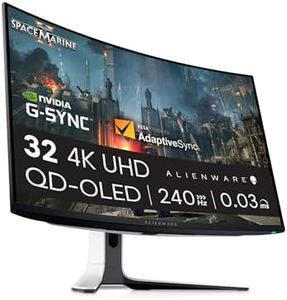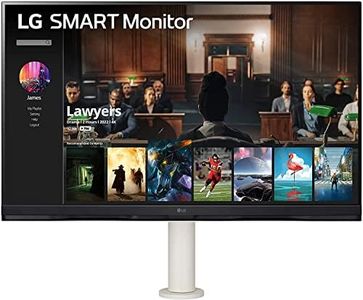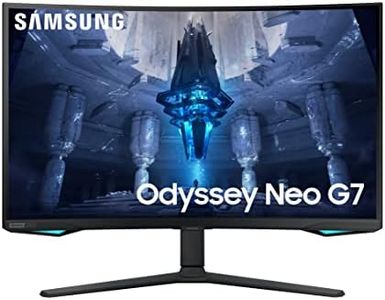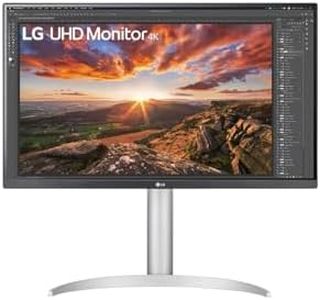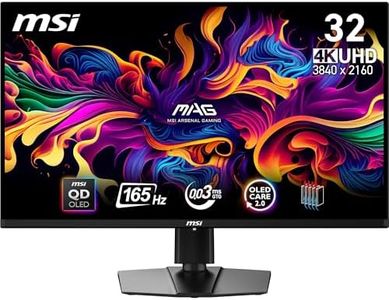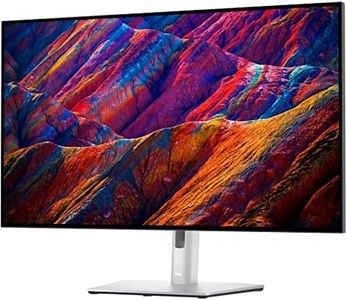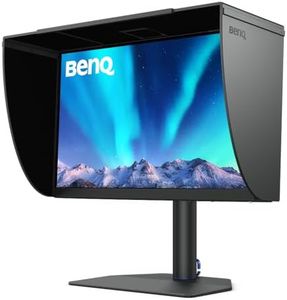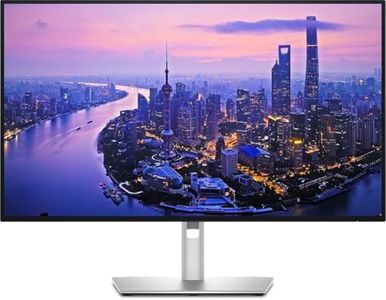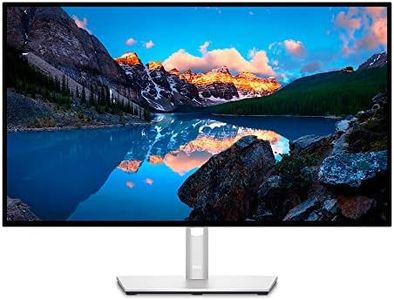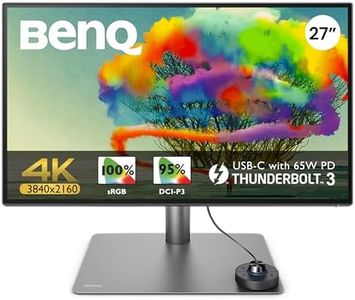We Use CookiesWe use cookies to enhance the security, performance,
functionality and for analytical and promotional activities. By continuing to browse this site you
are agreeing to our privacy policy
10 Best 4K Monitors
From leading brands and best sellers available on the web.Buying Guide for the Best 4K Monitors
When shopping for a 4K monitor, it's important to understand both the benefits of higher resolution and the diversity of features available. 4K means the monitor has a resolution of 3840 x 2160 pixels, delivering much sharper and more detailed images than lower resolutions. But not all 4K monitors are the same—different models have features that make them better suited for specific needs, such as gaming, professional design, or general use. To pick the right one, focus on the key specifications that affect image quality, performance, and usability.Panel TypePanel type refers to the technology used for the screen itself, and it greatly affects color reproduction, viewing angles, and response time. The three main types are IPS, VA, and TN. IPS panels offer vibrant colors and wide viewing angles, making them ideal for graphic design, photo editing, or watching movies. VA panels provide deeper blacks and better contrast, which are great for media consumption in darker environments, but may have slower response times. TN panels are known for fast response but have narrower viewing angles and less accurate colors, making them more common for fast-paced gaming. Consider your typical usage: if you care about color and viewing comfort, IPS is usually best; if you're into high-contrast visuals, VA is preferable; for gaming where speed matters most, TN can be a good choice.
Refresh RateRefresh rate is how many times per second the screen updates its image, measured in Hertz (Hz). Most standard 4K monitors have a 60Hz refresh rate, which is suitable for general use, watching videos, and non-competitive gaming. Higher refresh rates, such as 120Hz or 144Hz, result in smoother motion and are more desirable for gamers who play fast-action titles. If you mostly browse, work, or do creative work, 60Hz is sufficient. But if you game frequently and your computer can handle 4K at high frame rates, a higher refresh rate monitor provides a more fluid experience.
Screen SizeScreen size is the physical measurement of the display, usually in inches measured diagonally. Common 4K monitor sizes range from about 27 to 32 inches, with some going even larger. Bigger screens allow you to make full use of the high resolution, displaying more detail without making things too small to see, but they also require more desk space and may cost more. Think about how much space you have and how far you sit from your monitor. For most people, a 27 to 32 inch range is the sweet spot for both productivity and entertainment at 4K.
Color Accuracy and CoverageColor accuracy and coverage refer to how faithfully the monitor can display colors compared to industry standards and how much of those color spaces it can show. Monitors often list coverage for sRGB, AdobeRGB, or DCI-P3 color spaces. If you do photo editing, video production, or design, look for monitors with high accuracy (such as those with factory calibration) and broad color space coverage. For general office use or casual entertainment, exact color accuracy is less critical, so this spec may not need as much attention.
HDR SupportHDR, or High Dynamic Range, allows monitors to display a wider range of brightness and colors, making images look more lifelike. Not all 4K monitors have HDR, and among those that do, the quality can vary significantly. Basic HDR can enhance movies and games a bit, but full benefits require higher brightness and better local dimming, which are only found in more advanced monitors. If you want the best movie or game visuals, look for monitors with true HDR capability; otherwise, basic or no HDR is fine for standard work.
ConnectivityConnectivity options refer to the types and numbers of ports available on the monitor, such as HDMI, DisplayPort, USB-C, and built-in USB hubs. Different devices may require specific ports for optimal video quality or charging, so think about what you'll be plugging into your monitor. For example, if you have a new laptop with USB-C support, choosing a monitor that offers USB-C with charging capability can reduce cable clutter. Make sure the monitor has the right number of ports and types for your laptop, PC, or media devices.
Ergonomics and AdjustabilityErgonomics and adjustability describe how much you can tilt, swivel, rotate, or adjust the height of the monitor. This is important for comfortable long-term use and customizing your workspace. Basic monitors may only tilt up and down, while more ergonomic models allow height adjustment, swivel, and even pivoting into portrait mode. If you spend hours at your desk or want a more comfortable setup, prioritize monitors with better adjustability. For simple setups with low usage, fixed stands may be sufficient.
